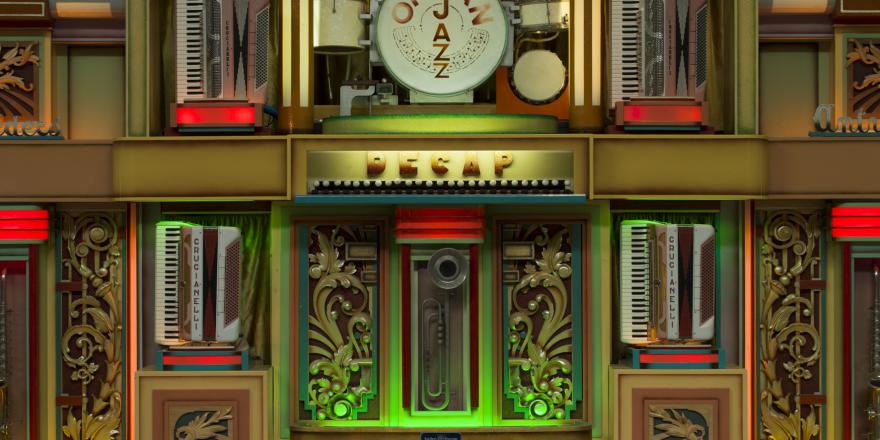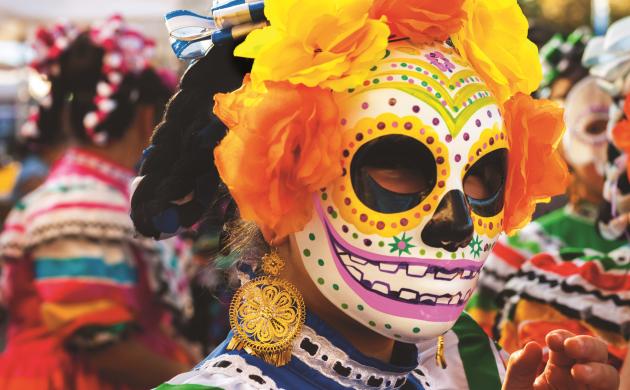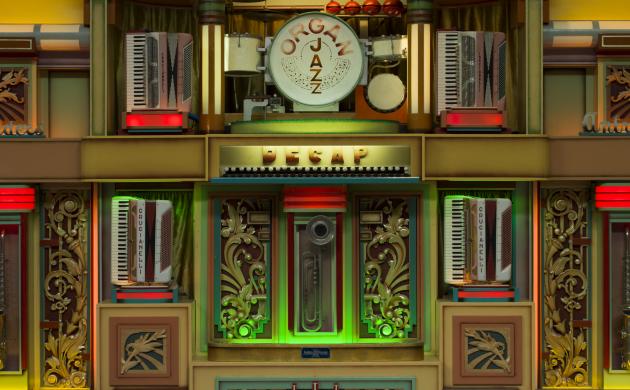"Ommegang"
For centuries, giants have played a special role in Antwerp. Great parades with giants are still the source of enormous pleasure in the city. During some recent summer festivals Antwerp received a visit from the famous giants of Royal de Luxe from the French city of Nantes.
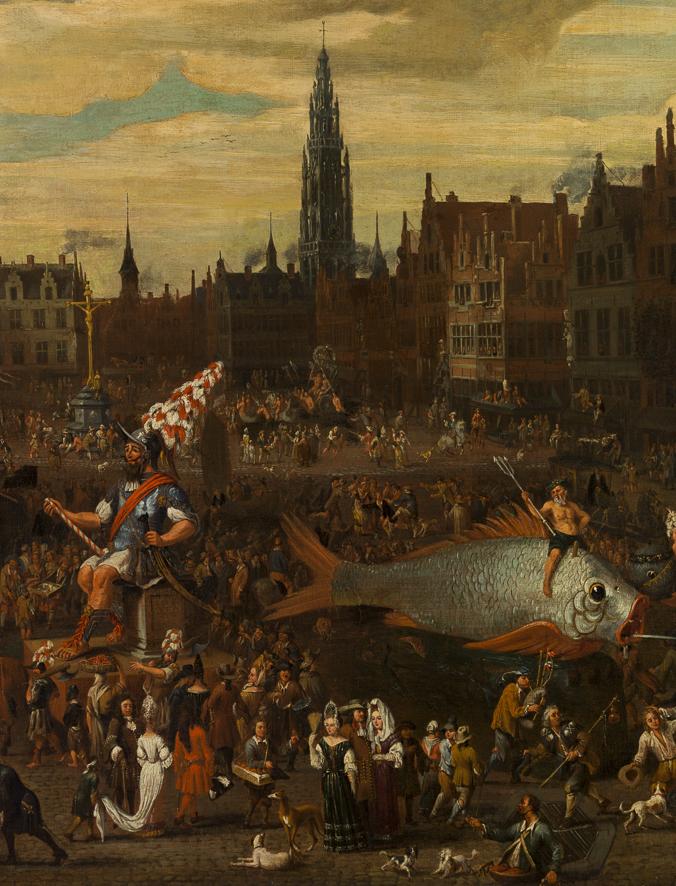
Painting depicting the "Ommegang" procession on Meir
F.V.R. (painter)
MFA.1957.103.001
Collection Stad Antwerpen, MAS
Antwerp's parade of giants or "Ommegang" has a long tradition dating back to medieval catholic processions. Over the centuries, the "Ommegang" grew increasingly modern and diverse. It was held for the last time in 1958.
Over the past forty years plenty of new giants have sprung to life in the districts of Antwerp. These are often club mascots joining in with local events. Some of Antwerp's giants are even registered in the civil register.
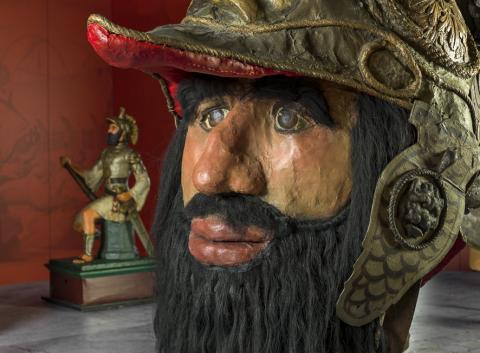
Druoon Antigoon in the exhibition
Photo © Pat Verbruggen
The joyful entrance of a new monarch was a traditional moment to hold the "Ommegang". A threatening giant walked as part of the parade. The message was that the city of Antwerp had often stood up to great Goliath strangers, just like little David. In doing so the city had acquired privileges over the centuries. Antwerp's giant was called Druoon Antigoon.
Pride
The annual Antwerp Pride has grown into a top tourist attraction lasting several days. Right from the start, the city of Antwerp was among those taking the initiative for the parade, a celebration of emancipation, diversity and also city marketing.
The Antwerp Pride as a whirling spectacle that blurs the distinction between participants and spectators is a recent phenomenon. Until recently LGBTs were unable to demonstrate their orientation on the street, let alone celebrate it. By doing so you could be ridiculed or even lose your job. Furthermore, the HIV epidemic put considerable pressure on the homosexual community.
At the time, the district around Antwerp's station was the place to be. In the Van Schoonhovenstraat, nicknamed Rue Vaseline, you could find one homo bar after the other. There was a lively party culture behind shutters and closed doors.
Ganesha
The Ganesha festival or Ganesh Chaturthi is a Hindu festival lasting ten days in honour of the god Ganesha with the elephant head. He is the god of knowledge and wisdom and is worshipped, among other things, to bring success in new businesses and to remove obstacles. He is celebrated all over the world, including Antwerp.
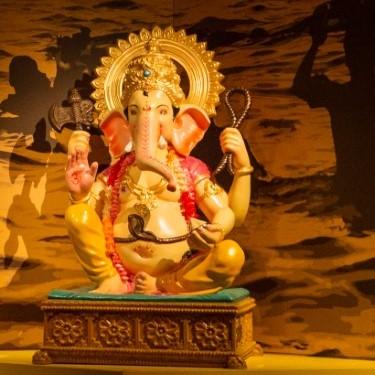
Statue of Ganesha in the exhibition
Photo © Ans Brys
At the beginning of the celebration, small or large statues of the god are placed in homes and in public. In Antwerp, this is done in a large party tent in the city park. Many religious and cultural activities are scheduled during the festival.
At the end of the festival the statue is carried away in a massive procession and launched onto the water. It then dissolves.
This statue was made in India at the MAS's request, in a workshop that makes hundreds of Ganesha statues every year. It will remain in the museum collection and will therefore not be launched onto the water.
Dance organs
Dance organs are a Belgian phenomenon. Around 1900 these were unusually popular, particularly in Antwerp and Brussels, but also in the south of the Netherlands. Antwerp manufacturers like Mortier and Decap became the market leaders in this ceremonial industry.
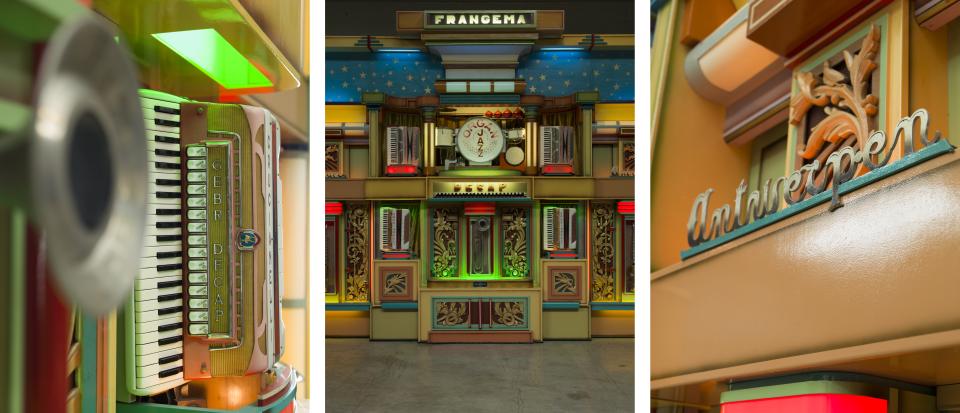
Decap organ
Photo © Pat Verbruggen
The organs were ingenious machines that got people dancing. They were created before the invention of the radio. The organ rental sector became a strong competitor to dance orchestras.
Dance organs were rented for fairs and parties and given a permanent home in dance palaces and roadside cafés. They could be enormous and were fitted with moving parts, self-playing instruments and lighting effects. Most were repeatedly updated to suit the changes in style and taste in music. As from the 1960s they were forced to bow down to the DJ.
And there's more ...
Our museum hall shows many other celebrations too. During a real visit to our exhibition, you’ll discover wedding traditions in the Moroccan and Turkish community, “Dia de los Muertos” from Mexico, “Passage of the Equator” with sailors, the “Feast of the New Girl” with the Ticuna Indians or our local tradition of the last 100 days of school.


